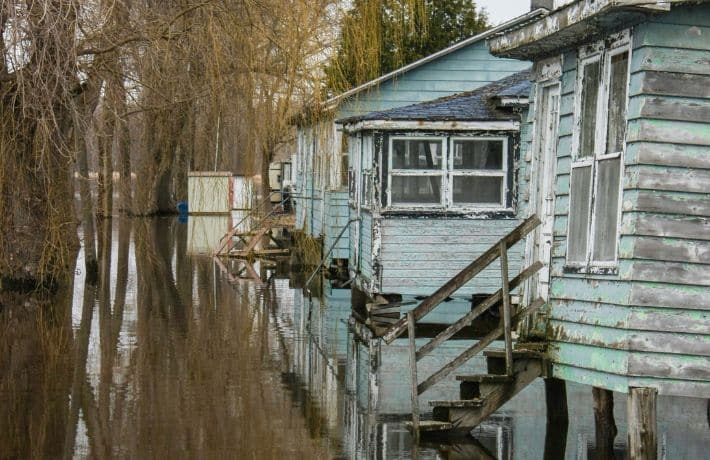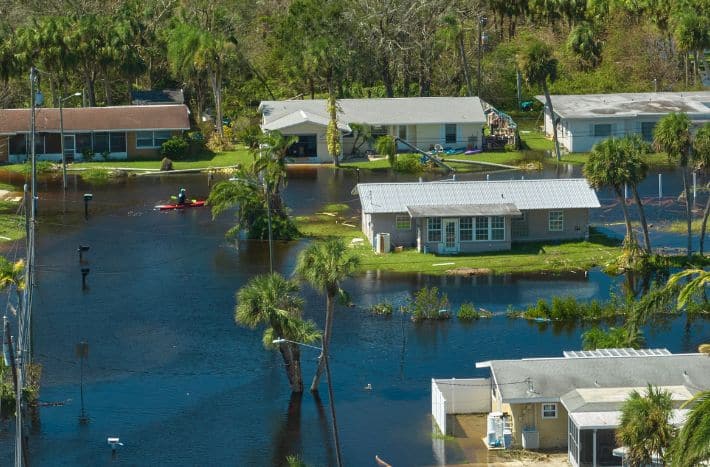Bridging the Equity Gap: Tools for Floodplain Managers. Part 3: Workforce Inclusion

In this article series for ASFPM, the Risk Communications and Outreach Committee is working hand-in-hand with the ASFPM Social Justice Task Force to bring findings, guidance, tools, best practices, and lessons learned from Bridging the Equity Gap: Flood Resilience for the Whole Community webinar series hosted by the U.S. Army Corps of Engineers San Francisco District and the National Flood Risk Management Program.
The goal of the monthly webinar series is to begin bridging the flood resilience equity gap by understanding the scale and complexity of the problem, identifying opportunities for change, and inspiring action. This article is the third installment. You can read article 1 here and article 2 here.
Building a more inclusive workforce
In the February 2022 webinar, a thoughtful panel discussed ideas on how to build a more diverse and inclusive flood risk management workforce. Panelists included Dr. Nnenia Campbell, deputy director of the Bill Anderson Fund and a research associate with the Natural Hazards Center at the University of Colorado Boulder; Ariana Rickard, public policy and funding program manager at the Sonoma Land Trust; Anna Muaswes, equal employment manager at the San Francisco District of the U.S. Army Corps of Engineers; and Larry Holman, program analyst from the harassment prevention program at the Department of Veteran Affairs.
Key takeaways from this webinar include:
- Just as there is a substantial disparity in flood risk management outcomes—where all communities and individuals are not equally resilient to floods—there is also an imbalance in our flood risk management workforce as compared to the racial and ethnic makeup of the U.S. as a whole. One panelist noted that, “If the wide array of lived experiences across the nation are not equally represented on our project teams, it’s likely that our efforts to deliver our projects more equitably will fall flat.”
- Equity and diversity in the workforce are about more than affirmative action and meeting quotas; it’s about learning from each other—sometimes having uncomfortable conversations in the process—to reach the end goal of being more agile, more innovative, and having the ability to approach problems differently. Many of the diversity goals our organizations have in place aren’t exactly extraordinary anyway. One panelist noted that he has an internal metric for 2% of his staff to be African-American men. Having 7%, he is well surpassing that goal, right? He’s knocking it out of the park! But then he asks: How can I justify having such a low goal when the community I work in is 70% African American?
- Diversity and inclusion in the flood risk management workforce may be especially vital because it’s so important that people see themselves reflected in the institutions that are serving them. In addition, many of the disparities we see in outcomes are rooted in historic and ongoing policies that have advantaged some and disadvantaged other communities. Diverse representation is important because the systems in place tend to reproduce these inequalities. A flood risk management workforce that is diverse in skillsets, perspectives, and lived experience are more likely to see these inequities for what they are and become change agents for future growth.
- Some of the barriers to diversity and inclusion in the flood risk management workforce include traditional and unchanging hiring practices—most companies and governmental entities hire how they’ve always hired and there may be little or no efforts on outreach to widen the net to people with more diverse backgrounds. Organizations and governmental entities also may have unconscious bias in the hiring process, and that bias may be positive or negative. Hiring managers may be drawn to candidates with similar backgrounds, work histories, alumni organizations, or other connections, which only serves to perpetuate the status quo.
Best quote from the chat:
“No one wants to get a job just to sit in a corner and not be heard to fill a quota… They want to contribute!”
Six things you can start doing today:
- Mentor someone who doesn’t look like you.
- Consider (or re-consider) your organization’s hiring practices. Do you heavily rely on educational background information in hiring? Do you go into nontraditional places and actively look for marginalized and underserved communities (e.g., Historically Black Colleges and Universities)? Can you go beyond just looking in different places for candidates but also actually investing in building relationships with the organizations where we find them?
- Care as much about retention as you do about hiring. If your institutional commitment is merely to hire a more diverse workforce but not to leverage people’s contributions, then it won’t work. Intentionally or not, this approach tends to exclude diverse populations from taking on leadership positions. Look inwards for barriers within your organization to ascend to leadership positions.
- Re-think the practice of having unpaid internships—practices like this tend to narrow the opportunities available based on people’s economic backgrounds.
- Do some digging: What are your organization’s diversity goals? Do they represent the populations you serve and the communities you represent? Who sets these goals and who benefits from them? Are these the same group?
- Be transparent about salary ranges and expectations. Share job postings that include clear salary ranges, and don’t ask about salary history when hiring. These practices can serve to reinforce salary inequities that we know exist.
Additional resources:
Check out Green 2.0, an organization dedicated to increasing diversity in the environmental sector. They present diversity data from environmental non-profit organizations and foundations. Check out their 2021 report here.
View this research conducted at Yale University that shows that people of color in the U.S., including Hispanics/Latinos, African Americans, and other non-White racial/ethnic groups, are more concerned than Whites about climate change.
Read Malcom Gladwell’s Talking to Strangers or The Inclusive Leader by Artika R. Tyner.
Check out the Code Switch podcast from National Public Radio. They describe themselves as, “the fearless conversations about race that you’ve been waiting for.”


